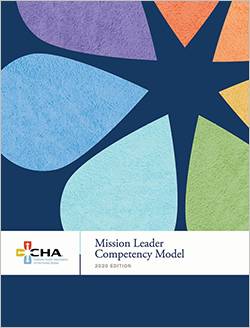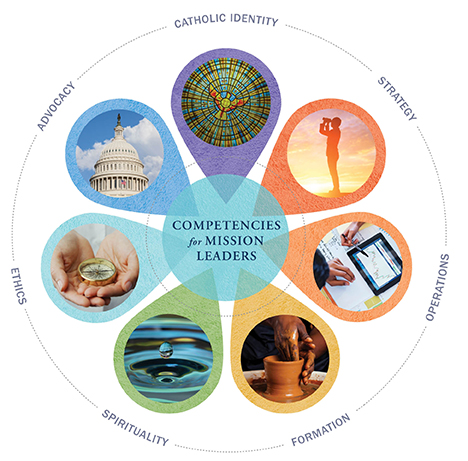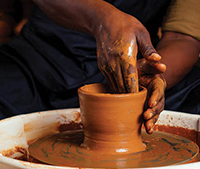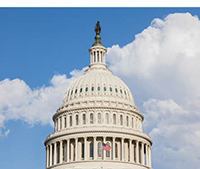BY BRIAN P. SMITH, MS, MA, MDiv
The role of the mission leader in Catholic health care in the United States was created in the mid-1970s. The responsibilities and skills of those early mission leaders varied greatly, and it was soon recognized that in order for the mission leader position to be relevant and successful, a set of standard competencies was necessary.
The Catholic Health Association published its first mission leader competency model in 1999. The competencies were primarily designed for academic institutions to develop courses and programs that would help educate and form mission leaders in the desired knowledge base and necessary personal qualities. That first model focused on theological, spiritual, ethical and organizational development as well as practical understanding of the operations and dynamics of health care organizations, recognizing that life-long learning is necessary to respond to the changing needs in the ministry.1
In 2009, working with the Reid Group of Seattle, CHA engaged the ministry through a series of online surveys, focus groups and personal interviews to understand the challenges, needs and hopes of sponsors, CEOs and other stakeholders and what competencies they found necessary in a mission leader. The 2009 CHA Mission Leader Competency Model included personal qualifications required and five competencies: Leadership, Theology, Spirituality, Ethics and Organizational Management.
The 2009 model served the ministry well for a decade. Since then, Catholic health care has expanded into wellness and prevention, population health and care delivery in non-acute settings. New partnerships between Catholic health entities and other-than Catholic providers became more common, and new models of governance and sponsorship emerged. In addition, lay mission leaders began to outnumber those who were religious sisters, brothers and priests. These new lay mission leaders come from a variety of backgrounds: theological, operational and clinical.2
While many mission leaders continue to have oversight for "traditional" areas of mission integration — church relations, ethics, pastoral care, formation and community benefit — we also see mission leaders specializing in areas such as measuring and improving Catholic identity, ministry formation, population health and advocacy. Today, more mission leaders serve in system and regional roles, which means they are responsible for mission integration in several facilities and across shared services. Because of all these changes and factors, the ministry realized it was time for the mission leader competency model to mature again.
 DEVELOPING THE 2020 CHA COMPETENCY MODEL FOR MISSION LEADERS
DEVELOPING THE 2020 CHA COMPETENCY MODEL FOR MISSION LEADERS
Beginning in June 2019, CHA again partnered with the Reid Group of Seattle to update the mission leader competency model. The process included interviews of over 30 key stakeholders (sponsors, CEOs and other senior executives), a survey of more than 600 mission leaders, and the convening of focus groups comprised of system executive mission leaders. A steering committee comprised of mission, human resources and organizational development leaders offered advice and recommendations to the mission department staff of CHA and the Reid Group as the competencies were being discussed and developed.
In February 2020, as drafts were being shared for feedback with system executive mission leaders, the coronavirus pandemic was beginning to impact the ministry and the country. While the goal had been to complete and share the new competency model at the CHA Assembly in June 2020, system mission executives agreed it was best to "hit pause" on the model. They asked, "What might we learn from the pandemic and what might the resulting changes in health care mean for mission leaders? How could this change the competency model?"
Months into the pandemic, CHA and its members were beginning to learn how health care was transforming and how the role of mission leaders was evolving once again. In addition, the killing of George Floyd on May 26, 2020, and the resulting protests calling once again for an end to systemic racism in the U.S., strengthened within the ministry our commitment to act on behalf of justice and to end racial disparities in health care. Recognizing that these watershed moments in our nation had implications for health care, CHA used this opportunity to add some behavioral expectations to the model to include leading transformational change as well as addressing racial injustice.
In summer 2020, CHA resumed the development of the competency model by adding several mid- and entry-level mission leader listening sessions. In September, the final draft was approved by system mission executives.
Affirming the variation among systems' structures, the model allows for adaptation. What one system expects of an executive mission leader may be required of a mid-level mission leader in another system. A ministry primarily focused on senior care in non-acute settings will have different expectations of a mission leader than one who is primarily serving in acute care and clinical settings.
Another example is that in one system a mission leader may be responsible for overseeing ethics, community benefit or spiritual care functions for a facility or region; and in another system, the mission leader may have oversight for these areas and collaborate with others who have specific expertise and who take responsibility for these areas that report up to the mission leader. The flexibility of the competency model is seen by many systems as one of its strengths.
Personal Qualifications and General Leadership Skills
A major change between the 2009 and 2020 mission leader competency model came from the input given by CEOs and other senior leaders interviewed. They strongly suggested there be a presumption that mission leaders already possess the necessary personal qualifications and general leadership competencies. These key stakeholders asked that the new competency model focus on the unique contribution mission leaders bring to the senior leadership team and the ministry they serve. Therefore, the new model assumes a mission leader will have the necessary personal and leadership qualifications, and that like other senior leaders, those competencies will need to grow as their responsibilities increase.
The personal qualifications a mission leader is presumed to possess include:
- Is well formed in the Catholic theological tradition
- Applies theological and ethical principles in a health care setting
- Models servant leadership
- Establishes mutually beneficial relationships with diverse groups
- Inspires others to live the mission and values of the organization
- Exhibits ongoing personal and professional development
The general leadership qualities a mission leader are presumed to possess include:
- Strategic thinking
- Business acumen
- Adaptability and agility
- Communication skills
- Managerial skills
- Succession planning
COMPETENCY MODEL FOR MISSION LEADERS3
The 2020 Competency Model for Mission Leaders includes seven competencies: Catholic Identity, Strategy, Operations, Formation, Spirituality, Ethics, Advocacy. The new model offers three tiers (entry, mid, and executive) for each of the seven competencies. The competencies are the same for all three levels; however, the behavioral expectations vary depending on the tier. The thought behind this approach is that a tiered model shows the increasing responsibility and expertise required as a mission leader develops. This creates a clear career path for the mission leader and a better understanding for those who work with them as to what to expect from their mission colleagues.
DEFINING THE TIERS
The presumption of certain personal qualifications and general leadership qualities for mission leaders means that even entry-level mission candidates will begin with a good amount of skills and responsibilities. Mission structures and titles vary widely across our ministries. While it is up to each system to determine which positions fall into each of these levels, the following outlines the positions that are likely to fall into each of the tiers below:


CATHOLIC IDENTITY
Stewards Catholic Identity and Strengthens
Church Relations

Mission leaders foster the creation of a mission-centered culture that permeates everything throughout the organization and enhances relationships with the institutional church. They promote a strong Catholic identity and implement key mission activities within the organization to ensure the ministry flourishes well into the future. Mission leaders serve as a bridge between sponsors and local bishop(s) regarding discussion of ethical and moral decisions, advocacy issues affecting the poor and marginalized, and accountability for Catholic identity.
General behavioral expectations include:
- Distinguishes the unique roles of sponsors, bishops, boards and senior leaders for overseeing the ministry
- Promotes and assesses the Catholic identity of the organization and appropriately reports to sponsors and bishops
- Builds trust and maintains excellent relationships with sponsors, bishops, pastors, local religious leaders and other Catholic ministries
- Inspires others to participate in and advance the healing ministry of Jesus and models the charism of the founding community(ies)
STRATEGY
Ensures the centrality of mission in strategy
 Mission leaders serve an essential role in integrating the heritage, tradition and values of Catholic identity amidst the changing context of health care. As the landscape and concerns change, mission leaders must read the signs of the times to ensure evolving strategies, partnerships and care models are suited to bring ministries into the future with integrity to the vision and charism of the founding communities. As vital culture bearers, mission leaders drive mission-focused strategy at all levels of the organization through personal integrity, wisdom and vision. Working with their partners, they bring the Catholic imagination to bear on the future of the organization.
Mission leaders serve an essential role in integrating the heritage, tradition and values of Catholic identity amidst the changing context of health care. As the landscape and concerns change, mission leaders must read the signs of the times to ensure evolving strategies, partnerships and care models are suited to bring ministries into the future with integrity to the vision and charism of the founding communities. As vital culture bearers, mission leaders drive mission-focused strategy at all levels of the organization through personal integrity, wisdom and vision. Working with their partners, they bring the Catholic imagination to bear on the future of the organization.
General behavioral expectations include:
- Models the mission and legacy of Catholic health care
- Applies the Catholic theological and ethical tradition to strategic discussions
- Influences strategic direction to meet the needs of the times
- Innovates practices and procedures to ensure the vitality of the ministry
OPERATIONS
Incorporates the mission and values into all operations of the organization
 Mission leaders are critical partners in ensuring that the Catholic worldview and commitments are expressed in an organization's policies, practices and procedures. While day-to-day operations may look the same in Catholic health care and other-than-Catholic health care organizations, it is the how and why things are done that differentiate the experience of patients, residents, families, co-workers and communities served by Catholic health. Every mission leader must be able to promote, shape and create practices consistent with the values and vision of Catholic health care and Catholic social teaching, which acknowledges the inherent dignity of each person, calls for the furthering of the common good and seeks justice through solidarity.
Mission leaders are critical partners in ensuring that the Catholic worldview and commitments are expressed in an organization's policies, practices and procedures. While day-to-day operations may look the same in Catholic health care and other-than-Catholic health care organizations, it is the how and why things are done that differentiate the experience of patients, residents, families, co-workers and communities served by Catholic health. Every mission leader must be able to promote, shape and create practices consistent with the values and vision of Catholic health care and Catholic social teaching, which acknowledges the inherent dignity of each person, calls for the furthering of the common good and seeks justice through solidarity.
General behavioral expectations include:
- Collaborates with leaders to ensure recruitment, selection and retention are inclusive and consistent with the organization's mission
- Analyzes the culture to ensure mission and values are embedded in policies and procedures of the organization
- Applies the Catholic theological and ethical tradition to operations and clinical practices
- Ensures that organizational and clinical practices reflect the radical inclusivity, caring and compassion of Jesus
FORMATION
Champions formation at all levels of the organization
 Mission leaders are uniquely responsible for the creation, delivery, measurement and integration of formative experiences for associates at all levels of the organization. Understanding that formation is critical to a thriving Catholic health ministry now and into the future, mission leaders are attentive to designing a variety of formation experiences—in person, digital and virtual—that build on one another and meet individuals where they are. They invite others into conversations to consider the depths of their jobs and careers as vocations and as facilitators, and they hold space for the work of the Holy Spirit in each person.
Mission leaders are uniquely responsible for the creation, delivery, measurement and integration of formative experiences for associates at all levels of the organization. Understanding that formation is critical to a thriving Catholic health ministry now and into the future, mission leaders are attentive to designing a variety of formation experiences—in person, digital and virtual—that build on one another and meet individuals where they are. They invite others into conversations to consider the depths of their jobs and careers as vocations and as facilitators, and they hold space for the work of the Holy Spirit in each person.
General behavioral expectations include:
- Invites others to discover meaning and purpose in their work
- Facilitates or ensures excellent formative experiences are provided in a variety of modalities
- Presents or ensures presentations are of high quality
- Supports leaders in creating meaning and purpose across the organization
SPIRITUALITY
Nurtures spiritual health
 Mission leaders articulate their lived faith experience and the meaning it brings to their lives as well as encourage and empower individuals and organizations to do the same. Cultivating an integrated spiritual life, they establish mutually beneficial relationships with diverse individuals and groups that are honest, caring and joyful. They help others find the sacred in the ordinary events of life and connect their own work and spirituality to the mission and values of the organization. Mission leaders help build a sense of community in the organization and, in collaboration with others, develop and foster well-being initiatives and holistic care models responding to the physical, spiritual and emotional needs of patients, residents and caregivers.
Mission leaders articulate their lived faith experience and the meaning it brings to their lives as well as encourage and empower individuals and organizations to do the same. Cultivating an integrated spiritual life, they establish mutually beneficial relationships with diverse individuals and groups that are honest, caring and joyful. They help others find the sacred in the ordinary events of life and connect their own work and spirituality to the mission and values of the organization. Mission leaders help build a sense of community in the organization and, in collaboration with others, develop and foster well-being initiatives and holistic care models responding to the physical, spiritual and emotional needs of patients, residents and caregivers.
General behavioral expectations include:
- Demonstrates personal commitment to one's ongoing spiritual and vocational development
- Promotes workplace spirituality resonant with the desired organizational culture while inviting the expression of diverse spiritualities and their practices
- Ensures the vibrancy and professionalism of spiritual care services to meet the unique needs of patients, residents, families and associates
ETHICS
Promotes organizational and clinical ethics
 Mission leaders understand, apply and serve as a resource regarding the principles of Catholic social teaching and moral theology, including the Ethical and Religious Directives for Catholic Health Care Services (ERDs). They are responsible for ensuring that the appropriate level of ethics training is provided to various levels and disciplines in the ministry. Mission leaders can identify clinical and organizational ethical issues and facilitate an ethical discernment process in collaboration with key stakeholders, subject matter experts and trained ethicists. They create and cultivate an organizational culture where difficult conversations can occur in a safe and transparent environment. Mission leaders consistently inspire fidelity to Catholic identity in all aspects of business operations and ensure that a respect for human dignity and the common good are at the core of the ethical discernment process.
Mission leaders understand, apply and serve as a resource regarding the principles of Catholic social teaching and moral theology, including the Ethical and Religious Directives for Catholic Health Care Services (ERDs). They are responsible for ensuring that the appropriate level of ethics training is provided to various levels and disciplines in the ministry. Mission leaders can identify clinical and organizational ethical issues and facilitate an ethical discernment process in collaboration with key stakeholders, subject matter experts and trained ethicists. They create and cultivate an organizational culture where difficult conversations can occur in a safe and transparent environment. Mission leaders consistently inspire fidelity to Catholic identity in all aspects of business operations and ensure that a respect for human dignity and the common good are at the core of the ethical discernment process.
General behavioral expectations include:
- Ensures effective on-going staff education on human dignity, the common good and other relevant ethical principles
- Promotes the implementation of ethical standards throughout the organization
- Serves as a resource regarding the Catholic moral tradition, including the ERDs
- Ensures Catholic social and moral traditions are respected as partnerships are explored
- Creates safe space for managing tensions and assists in resolving conflicts
- Promotes use of ethical discernment models
ADVOCACY
Advocates for persons who are affected by poverty and are marginalized
 Mission leaders are uniquely positioned to hear the voices of those in vulnerable populations and then passionately advocate on their behalf. They engage community and system leaders in dialogue to ensure strategy, decisions, policies and budgets demonstrate a tangible commitment to justice, solidarity and right relationship. They also are intricately involved in setting advocacy priorities and collaborating with stakeholders to meet the demonstrated needs of the community. This advocacy encompasses the needs of patients, residents, families and associates, as well as the wider community. Mission leaders encourage all associates and community leaders to follow the Gospel values demonstrated in the example of Jesus Christ, with a preferential option for those who are marginalized and affected by poverty and a special focus on ending systemic racism and injustice that lead to health disparities and inequities.
Mission leaders are uniquely positioned to hear the voices of those in vulnerable populations and then passionately advocate on their behalf. They engage community and system leaders in dialogue to ensure strategy, decisions, policies and budgets demonstrate a tangible commitment to justice, solidarity and right relationship. They also are intricately involved in setting advocacy priorities and collaborating with stakeholders to meet the demonstrated needs of the community. This advocacy encompasses the needs of patients, residents, families and associates, as well as the wider community. Mission leaders encourage all associates and community leaders to follow the Gospel values demonstrated in the example of Jesus Christ, with a preferential option for those who are marginalized and affected by poverty and a special focus on ending systemic racism and injustice that lead to health disparities and inequities.
General behavioral expectations include:
- Relates with and respects vulnerable populations, including employees and contract workers
- Establishes relationships with social service agencies serving individuals on the margins
- Influences and encourages the organization to respond to the needs of people who have limited resources
- Advocates for public policies that enhance the common good
- Advocates for the community health needs assessment, community improvement plan and reporting
Final Thoughts
As the new competency model neared completion, one mission executive joked that, "Only Jesus can meet all of the competencies required of a mission leader!" Still, the majority appreciate that the model is both inspirational and aspirational, calling mission leaders to ongoing development and formation. A new mission leader is not expected to have developed all of the competencies to the same extent as a mid- or executive-level colleague. In some cases, a mission leader may possess a mix of entry and mid-level competencies. Others may have both mid- and executive-level competencies.
This model offers mission leaders a career path that with self-awareness, feedback from peers, as well as mentoring, they should be able to mature in their role and take on increasing responsibility. It is recommended that all mission leaders use the self-assessment tool that accompanies this competency model along with the new virtual coaching tool — both located on the CHA website. Mission leaders are encouraged to share these results with their supervisor and mentor to ensure accountability and ongoing development and formation. Knowing where one is in one's competency development and what is expected to move toward the next level will enable a mission leader to determine what further studies, leadership opportunities and formation is needed to move forward. In order to support mission leaders in their ongoing personal and professional development, CHA will continue to develop resources with our members to help the profession of mission integration grow.
While this is the third Mission Leader Competency Model published by CHA in the last 30 years, it will not be the last. However, CHA is confident this 2020 model will well serve its members for several years, until that time when the health care landscape has shifted in unforeseeable ways and the competencies of mission leaders must again be discerned and reimagined.
BRIAN P. SMITH, MS, MA, MDiv, is vice president of sponsorship and mission services, the Catholic Health Association, St. Louis.
NOTES
- Brian Smith, "Form Follows Function: The Evolution of Mission Integration in U.S. Catholic Health Care," Health Progress 101, no. 2 (March-April 2020): 55.
- Smith, "Form Follows Function," 59.
- Please see the seven competencies and behavioral expectations for each of the tiers: https://www.chausa.org/mission/mission-leader-competencies.
- Please see the Framework for Ministry Formation for competencies specific to a formation leader: https://www.chausa.org/ministry-formation/ministry-formation-leadership-competencies.
- Mission Leader Competencies Self-Assessment Tool: https://www.chausa.org/mission-leader-competencies.